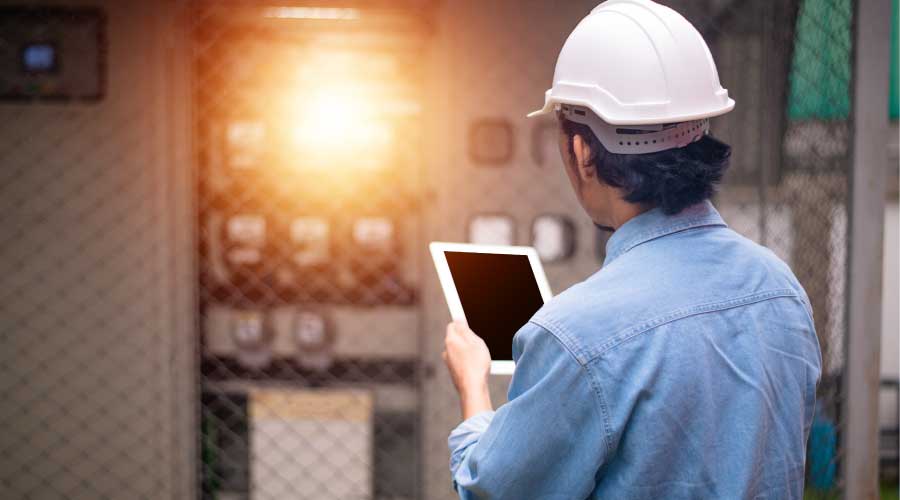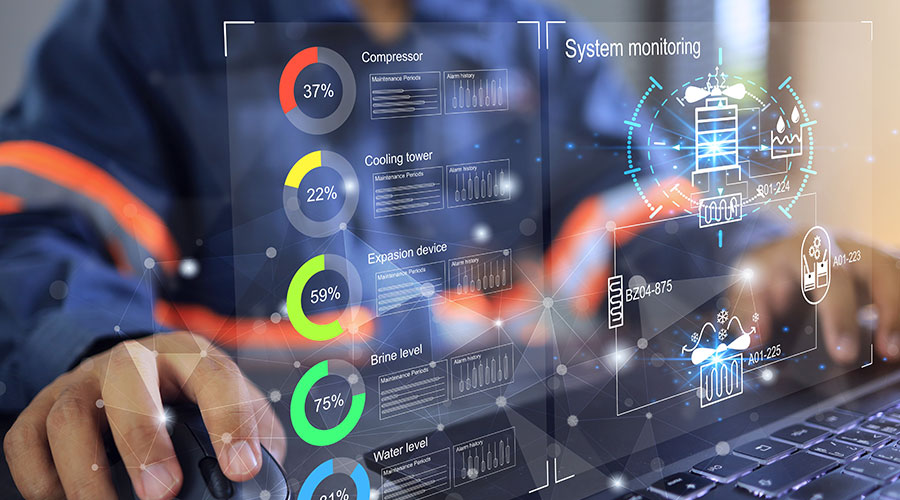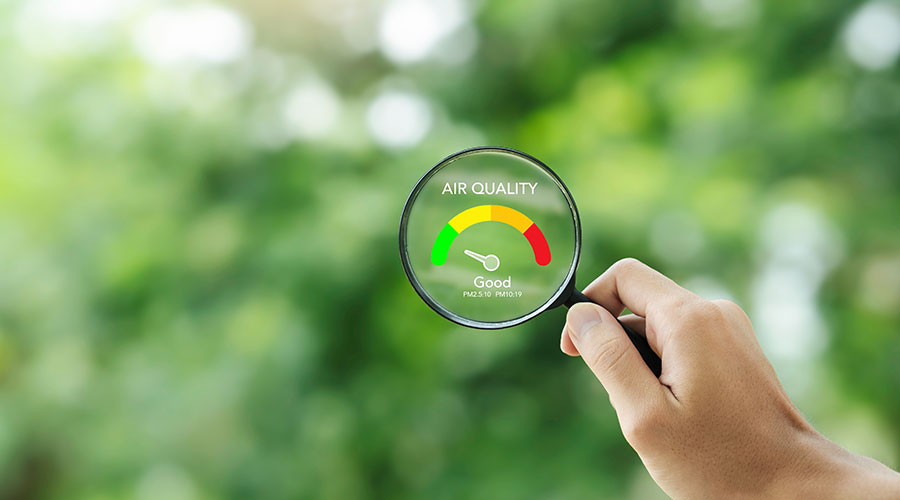Building an IAQ Arsenal
Maintaining a healthy indoor environment requires that managers select the ‘right’ IAQ analyzers and test equipment
The recent spread of severe acute respiratory syndrome (SARS) has heightened awareness among building occupants and visitors about the importance of maintaining a safe, healthy indoor environment. Maintenance and engineering managers for years have dealt with the role of indoor air quality (IAQ) in human health. But news of SARS, coupled with other issues such as building mold, is prompting managers to revisit their efforts.
A new generation of diagnostic and monitoring technology is helping managers and front-line technicians protect building occupants. Among the most important pieces of equipment in this category are those that help managers identify specific IAQ problems in order to contain the affected areas, diagnose the problem, and perform remediation and cleanup.
Challenges and Responses
The importance of IAQ has taken on a new meaning since the energy crisis of the 1970s. Responding to rising energy costs, many facilities were built with permanently sealed windows to minimize heating and cooling loads. Buildings also were designed with tighter supply-air requirements.
These tighter, more energy-efficient facilities also increased the burden on HVAC systems, which as a result became one of the main tools used to maintain proper IAQ. Today, maintenance and engineering managers pay more attention than ever to improving IAQ, given the twin requirements to control energy costs and to minimize negative health effects of the indoor environment.
Product options for measuring and monitoring IAQ include many varieties of air-velocity, bioaerosol, and direct-reading electronic-testing monitors and meters:
Air-velocity measurement. This is accomplished with: flow hoods, which measure air supply and exhaust velocities; thermoanemometers, which perform ventilation effectiveness checks; and rotating- and swing-vane velometers.
Bioaerosol meters. These tools measure nonrespirable-respirable segregation, or total count. They will not show size distribution, but they will collect 95-100 percent of viable particles larger than 0.8 microns on trypticase agar — bacteria — or malt extract agar — fungi. While bioaerosol meters can collect viruses, no easy method of counting is available.
Direct reading meters include:
Gold film analyzers. These tools can detect mercury by passing a measured volume of air over a gold plate. Then, using a microprocessor, the analyzer can calculate mercury concentrations and digitally display them in milligrams per cubic meter.
Ozone meters. Meters use thin-film semiconductor sensors to measure 0.01-9.5 parts per million (ppm) of ozone in air and show concentration directly on a LCD display. They are accurate at 0-40 degrees C, and 10-80 percent relative humidity.
Toxic gas meters. These meters provide continuous analysis and electronic recording. An electrochemical reaction generates an electric current that is directly proportional to the gas concentration, and the meter displays the result in ppm. It can measure concentrations for gases including carbon monoxide (CO), chlorine, ethylene oxide, hydrogen chloride, hydrazine, hydrogen cyanide, nitrogen oxides and sulfur dioxide.
Photoionization meters. This technology creates charged particles from the gas and collection by application of an electric field. These meters measure many organic and some inorganic compounds.
Infrared analyzers. Analyzers are multi-gas programmable spectrometers that are connected to microprocessors. They average the measurement signal and calculate the absorbance values. Readings are in ppm or absorbance units (AU). Gases measured include anesthetic gases; carbon monoxide and carbon dioxide (CO2) for indoor air assessments; ethylene oxide; and fumigants, such as ethylene dibromide and methyl bromide.
Direct-reading particle monitors. Condensation nuclei counters work by condensing alcohol on very small particles to increase their size for readability. The monitors are used for measuring smoke, dust and exhaust fumes, and for testing dust monitors and respirators. Photodetec-tors measure near-infrared scattered electromagnetic radiation. They are used to measure airborne particles and aerosols, including dust, fog, fumes, mist and smoke.
Combustible gas meters. Oxygen meters measure oxygen percent by volume with a galvanic cell. Other electrochemical sensors measure toxic gases, such as CO and hydrogen sulfide. Some of these units also come equipped with an audible low-oxygen alarm.
Light, ionizing and non-ionizing radiation meters. Light meters measure instantaneous, integrated or average visible, UV or near-UV light, depending on the detector used. Ionizing radiation survey meters measure radon decay products in air samples collected on filters. Non-ionizing radiation meters measure electric field strength, magnetic field strength or both. Instruments are available to check electromagnetic field strengths of such equipment as heat sealers, power lines, transformers, television and radio transmitters, and microwave ovens.
Electronic-testing meters. This category includes multimeters (AC or DC voltage, current and resistance); clip-on ammeters (current by phase on operating equipment); receptacle testers; power factor meters; megohmmeters, for motor winding tests; ground fault interrupt testers; electrostatic meters; current generators; and AC voltage detectors. These meters also test for AC leakage, proper line voltage, battery condition, shielded connections, continuity, and fuse and circuit breaker condition.
Strategies for Success
To ensure the success of efforts aimed at providing proper IAQ, an organization should consider appointing a champion to coordinate all IAQ activity and report on needs, remediation efforts and progress.
The first phase of an IAQ improvement program is a records review and occupant interviews to gather complaints and illness reports. During this phase, the IAQ team walks through a building to observe conditions in potential problem areas. Team members also visually inspect exterior areas for conditions such as nesting birds, wet leaves near air intakes, or standing water on the roof — any of which might indicate problems. Interior inspections of mechanical rooms and occupant areas for sources of airborne pollutants are next. The team gathers records of HVAC design to compare current, design and ASHRAE recommended levels for airflow, temperature and humidity.
The second phase is measurement. Depending on findings from phase one, trained individuals can use various monitors and meters — in addition to sampling equipment, such as vacuums fitted with HEPA filters and video or fiber optic devices — for inspection and sampling of air ducts and other hard-to-reach places.
Measuring equipment include air flow meters and electrical multimeters. The types of contaminants expected in the air will determine the use of other meters. For example, if an HVAC system is in disrepair, supply or exhaust air volume might be insufficient to meet air-change guidelines.
Airflow, oxygen, CO and CO2 meters are required to ensure proper levels. If certain chemicals are used in a facility, such as anesthesia, hydrogen disulfide (H2S) or fumigants, then meters for these substances will be required.
Ensuring Long-term Performance
The most important maintenance rules are to follow closely the manufacturer's maintenance instructions that come with a unit and to have calibrations performed at recommended intervals.
Many meters and monitoring instruments require batteries for portability. Technicians should replace alkaline batteries often, or carry spare batteries to ensure they are fully charged. Rechargeable batteries include nickel-metal hydride, lead-acid or nickel cadmium (NiCad). If NiCad batteries are discharged to below 1 volts per cell, they can produce a reverse current that can permanently damage them.
Likewise, overcharging some batteries — doing so for more than 16 hours at a high rate — also can ruin them. Some batteries must be discharged to a recommended level before charging.
Regular maintenance and calibration at recommended frequency will ensure reliability and high quality, accurate readings. Departments with the proper calibration resources, such as standards and a test lab, can perform such maintenance in-house.
If not, managers can work with reputable calibration services to keep devices up to national standards of accuracy. Such services will provide recommended shipping instructions so equipment arrives undamaged, and they can provide, as can manufacturers, recommended calibration frequencies for specific use and conditions.
Some meters need little field maintenance, other than timely battery replacement and cleaning. Other types, such as infrared analyzers, need periodic filter replacement. And still others, such as mercury analyzers, require routine maintenance, including burning off mercury deposits from the gold film and changing the zero filter when needed. These units also require annual calibration.
Meter Maintenance and Use
Before each use, technicians should check and replace or recharge batteries before they become discharged, as low batteries will cause errors. Batteries should be removed from the meters when not in use.
Condensation nuclei (particle) counters require zeroing both before and after use, the addition of isopropyl alcohol every five to six hours, and a fully charged battery pack every five hours. Operators should not store batteries in a discharged state.
Among the types of equipment with a recommended calibration interval of one year are dust monitors, electric testers, gas monitors, heat-stress analyzers, ionizing and non-ionizing radiation meters, respirators, sound instruments, tachometers, vibration meters, air-sampling pump calibrators, and condensation nuclei counters.
Finally, some meters and analyzers come with a recommended calibration interval of every two years, such as air-velocity meters, carbon monoxide and hydrogen sulfide meters, light meters, and pressure gauges.
Managers should note that these are general guidelines. Judgment is required to adjust these intervals when particular conditions of use — such as heat, cold, moisture dirt and dust — warrant it. Extreme heat and cold can cause errors in instrument readings.
The arsenal of IAQ testing and analysis equipment obviously varies based on the needs of a particular facility. What is not likely to vary, however, is the process managers must go through to determine facility needs, select appropriate meters and analyzers, and maintain them properly to deliver reliable long-term performance.
Related Topics:











